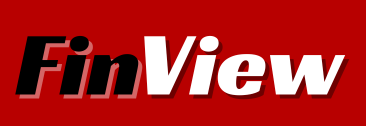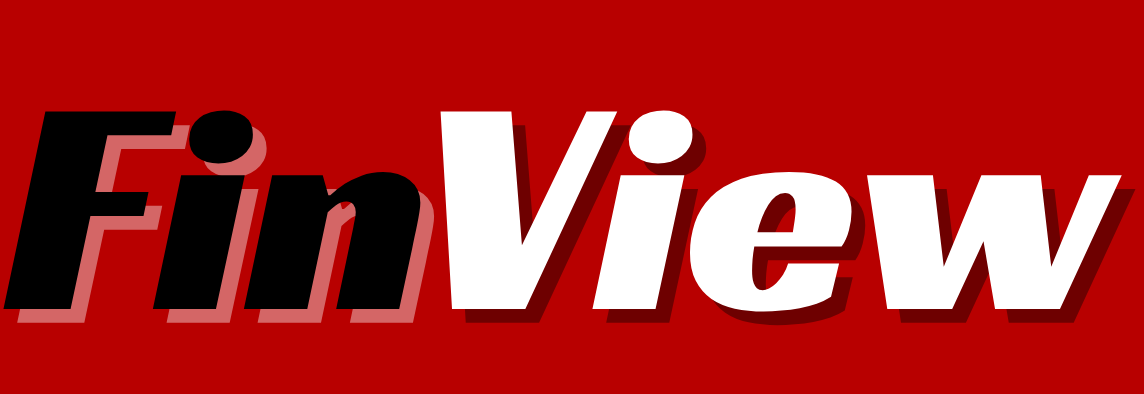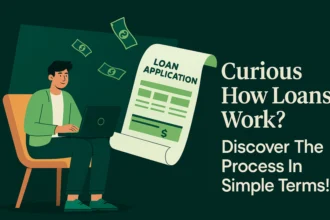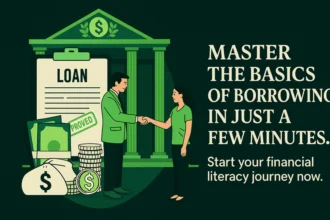What’s Happening with Student Loan Forgiveness in 2025?
Student loan forgiveness in 2025 isn’t just some government footnote — it’s becoming one of the most talked-about financial lifelines for millions of Americans. If you’ve got federal loans, whether you’re a current borrower, a fresh grad, or even a concerned parent footing tuition bills, this year could change everything.
2025 is packed with shifting policies, expiring waivers, new repayment options, and critical deadlines. From Public Service Loan Forgiveness (PSLF) tweaks to updates under the SAVE income-driven repayment plan, understanding what’s in motion could mean the difference between full forgiveness and missed opportunities.
So, what exactly is changing? Let’s break it all down — clearly and honestly.
Key Takeaways
- Federal student loan forgiveness programs are still active in 2025, including PSLF, IDR, and Borrower Defense.
- The new SAVE income-driven repayment plan could reduce monthly payments and speed up forgiveness for eligible borrowers.
- 2025 brings final deadlines for limited PSLF waiver credits and borrower defense applications — missing them could cost you.
- Private student loans do not qualify for federal forgiveness programs like PSLF or IDR.
- Staying up to date on policy changes and program requirements is the best way to maximize your forgiveness chances.
What Is Student Loan Forgiveness?
Student loan forgiveness is when your remaining loan balance is wiped clean under certain federal programs. It’s not just wishful thinking — it’s real, though only if you meet specific criteria.
It’s easy to confuse forgiveness, cancellation, and discharge — but they’re not all the same.
- Forgiveness usually applies when you meet service requirements over time, like PSLF.
- Cancellation is often tied to career roles, like being a teacher in a qualifying school.
- Discharge is typically due to serious life changes, like permanent disability or school closure.
Just remember: forgiveness generally applies to federal student loans, especially Direct Loans. FFEL and Perkins Loans may qualify if you consolidate, but private loans? You’re out of luck on this front.
Why 2025 Is a Crucial Year for Student Loan Forgiveness

2025 isn’t just another year on the calendar — it’s the deadline year for several temporary waivers, one-time adjustments, and legal transitions that followed the Biden administration’s major (and partially blocked) forgiveness efforts from 2022–2024.
In 2023, the Supreme Court struck down Biden’s broad cancellation plan, but it didn’t stop the Department of Education from continuing targeted relief. Since then, a patchwork of updates, such as IDR account adjustments and limited PSLF waivers, were launched to fix years of mismanagement and misinformation by loan servicers.
Now in 2025, many of those temporary benefits are ending. COVID-19 emergency forbearance is long gone. Payments are back in full swing. And final deadlines for retroactive PSLF credit and borrower defense claims are looming.
In short: if you qualify for anything — now’s the time to act.
Major Student Loan Forgiveness Programs in 2025
Public Service Loan Forgiveness (PSLF)
This program still offers full forgiveness after 120 qualifying monthly payments if you work full-time for a nonprofit or government agency. What’s different in 2025? Temporary PSLF waivers that counted previously ineligible payments (like late or partial ones) are closing soon.
If you haven’t certified your employment or submitted PSLF forms, you could miss the expanded credit window.
Income-Driven Repayment Forgiveness (IDR)
IDR plans cap your monthly payment based on income and forgive remaining balances after 20–25 years. The new SAVE plan is the most generous yet — cutting payments for low-income borrowers and offering forgiveness as early as 10 years for those with small original balances.
The SAVE plan will fully replace REPAYE, and administrative fixes will apply past payments retroactively. That means older payments may now count toward your forgiveness timeline — even if you were in the wrong plan before.
Teacher Loan Forgiveness
Teachers working full-time in low-income schools may qualify for $5,000 to $17,500 in forgiveness after five years. But only certain teaching roles count, and you can’t combine this with PSLF for the same service period. Choose wisely.
Borrower Defense to Repayment
If your school misled you or violated certain laws, you can apply to have your debt erased. Many borrowers from schools like Corinthian and ITT Tech have already been approved.
Applications must go through the Department of Education. According to NerdWallet’s breakdown, 2025 marks the end of some extended application windows.
Total and Permanent Disability (TPD) Discharge
If you’re unable to work due to a permanent disability, your loans can be discharged. In 2025, the system uses automated data matching with the Social Security Administration to approve more eligible borrowers without requiring paperwork.
What’s New for Student Loan Forgiveness in 2025?
A lot of big stuff is happening this year.
The SAVE plan is rolling out in full, replacing older income-driven options. For many, monthly payments will drop dramatically, especially those earning under 225% of the poverty line. Forgiveness timelines are also getting shorter for borrowers with smaller loans.
There’s also a one-time IDR account adjustment — think of it as a reset button that counts prior payments, deferments, and some forbearance periods toward forgiveness.
The U.S. Department of Education is finalizing rule changes this year, too. Some could expand discharge options or adjust how defaulted loans are handled.
And there’s talk of new legislation allowing student loans to be included in bankruptcy proceedings more easily — though that’s still under debate.
Who Qualifies for Student Loan Forgiveness in 2025?

To qualify for forgiveness, you need to hold federal loans — specifically Direct Loans. Older FFEL or Perkins Loans don’t qualify unless you consolidate them into the Direct system.
Eligibility also depends on your program:
- PSLF requires qualifying employment in public service
- IDR depends on your income and years of payments
- Teacher forgiveness depends on where and what you teach
- TPD requires documentation or SSA/VA matching
- Borrower defense requires evidence your school defrauded or misled you
If your school closed while you were enrolled or shortly after, you may also qualify for automatic discharge.
How to Apply for Student Loan Forgiveness
Application processes vary depending on the type of forgiveness, but they all start at studentaid.gov.
For PSLF, submit the PSLF form annually and every time you change jobs. For IDR forgiveness, ensure you’re on a qualifying plan and recertify your income each year. TPD? SSA or VA match will handle that automatically in many cases.
Mistakes to avoid: missing deadlines, not certifying employment, or failing to consolidate when needed. One small error can delay forgiveness by years.
Student Loan Forgiveness and Taxes: What You Need to Know
Here’s a surprise that trips people up — some student loan forgiveness is taxable at the state level.
While federal law exempts IDR forgiveness from taxes through 2025 (and possibly longer), states may treat forgiven amounts as income. PSLF and TPD discharges are always tax-free, though, no matter where you live.
What If You Don’t Qualify for Forgiveness?
Not everyone gets forgiveness — but that doesn’t mean you’re out of options.
You can still lower your payments by enrolling in an IDR plan, even if you don’t expect forgiveness soon. If you’ve got private loans, refinancing might offer a better interest rate — just don’t mix federal and private loans unless you’re sure.
Also consider employer tuition repayment programs, military benefits, or deferment options during hardship. There are still ways to stay afloat.
Real-Life Stories of Forgiveness in 2025
A middle school teacher in Illinois just saw $17,500 forgiven after five years of service in a Title I school. Meanwhile, a city clerk in Georgia finally hit their 120 payments under PSLF — they started back in 2013. And one former ITT Tech student successfully claimed borrower defense and had $42,000 wiped clean.
These aren’t fairy tales. They’re real, recent, and happening all across the country.
Avoiding Scams and Misinformation in 2025
Scammers are targeting confused borrowers. If someone asks for upfront fees or rushes you into giving personal info, run the other way.
Never trust unofficial sources. Stick to studentaid.gov, state attorney general sites, or trusted nonprofits. Report any suspicious activity to the FTC, CFPB, or local law enforcement.
FAQs About Student Loan Forgiveness in 2025
Is student loan forgiveness still happening in 2025?
Yes — programs like PSLF, IDR, and TPD are active, though rules and timelines have changed.
Will new forgiveness programs be introduced in 2025?
Maybe. Several proposals are being debated in Congress but aren’t law yet.
Is the SAVE plan part of forgiveness?
Yes — it’s the newest IDR plan designed to reduce payments and lead to faster forgiveness.
Can I get forgiveness on private student loans?
No. Federal forgiveness programs don’t cover private loans.
What if I missed the 2022–2023 forgiveness window?
You might still qualify under PSLF or IDR account adjustments. Act fast.
Final Thoughts: Your Next Steps for 2025
Student loan forgiveness isn’t just possible in 2025 — it’s actively happening. But the clock is ticking.
Check your loan type. Verify your eligibility. Submit your paperwork. And keep an eye on deadlines. The choices you make now could save you thousands.
Don’t wait. Because after 2025? Some of these options could be gone.






